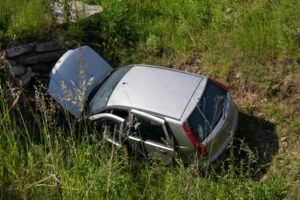A Guide to Common Types of Car Accidents

Texas, with its extensive road networks, experiences a significant number of car accidents annually. Whether it’s a minor fender-bender or a more serious incident, these occurrences affect lives and often lead to legal complexities.
As a driver in the Lone Star State, you need a clear grasp of the common types of car accidents that occur here. This knowledge not only empowers you to navigate the roads more safely but also equips you with the understanding needed should you find yourself involved in an unfortunate situation.
In this guide, we’ll look at types of car accidents, shedding light on the factors that contribute to each type of crash. This knowledge can provide you with practical insights to enhance your road safety.
If you are facing a car accident in Texas , you should consult our proficient car accident lawyers to assess potential personal injury claims and seek rightful compensation.
Rear-End Collisions
A rear-end collision occurs when one vehicle crashes into the back of another. It’s a common scenario on roads, often unfolding due to sudden stops, tailgating, or distracted driving. The simplicity of the definition, however, belies the potential complexity of the legal aftermath.
Rear-end collision injuries can range from minor to severe. Whiplash, probably the most common injury in this type of car accident, occurs when the head jerks forward and backward rapidly. Occupants may also experience back injuries, head trauma, or even psychological distress. Damages to the vehicles involved can vary, encompassing everything from bumper dents to more extensive structural harm.
Preventing rear-end collisions begins with maintaining a safe following distance, allowing for ample reaction time. Avoiding distractions, such as texting or adjusting the radio, ensures focused attention on the road ahead.
Additionally, staying aware of traffic patterns and brake lights can provide crucial seconds to react. Regular vehicle maintenance, including brake checks, can also contribute to a safer driving experience.
Liability in a Rear-End Collision
The driver behind should maintain a safe following distance and prepare to stop to avoid a collision. This leads to a presumption that the driver of the rear vehicle is at fault in a rear-end collision. However, this is a presumption, not an absolute rule.
The lead driver may share or bear the full responsibility. For example, if the front driver suddenly and unexpectedly stops without a valid reason, or if their brake lights don’t work, the rear driver might hold the front driver partially liable. Traffic conditions, speed, distance, and the actions of both drivers may affect liability.
T-Bone (Side-Impact) Collisions
T-Bone collisions, also known as side-impact or broadside collisions, occur when the front of one vehicle strikes the side of another, forming a “T” shape. These types of car accidents often happen at intersections, where vehicles traveling from different directions cross paths. The impact tends to happen on the door or side panel, making these collisions particularly dangerous due to the limited protection on the sides of vehicles.
Failure to yield the right of way, running red lights, distracted driving, and misjudging the speed of oncoming traffic are common causes of these types of car accidents. Poorly designed intersections, inadequate signage, and malfunctioning traffic signals can also play a role.
Determining liability in T-bone collisions involves evaluating the actions of each driver involved. Generally, the driver who fails to yield the right of way or violates traffic signals may bear responsibility. However, in some cases, both drivers may share fault.
Liability considerations may extend beyond the drivers to include factors like poorly maintained roads or malfunctioning traffic signals. Additionally, in certain situations, pedestrians or cyclists may further complicate the liability assessment.
Single Vehicle Accidents
Single-vehicle accidents, as the name suggests, involve only one vehicle. These incidents can occur due to various factors, including adverse weather conditions, road defects, driver error, or mechanical failures. Skidding on icy roads, hitting an obstacle, or losing control in a curve are common scenarios leading to such accidents.

Determining liability in a single-vehicle accident can require an investigation. If the driver is at fault due to negligence or impaired driving, they may bear sole liability. However, if a defect in the vehicle itself caused the accident, product liability may come into play. You can hold manufacturers or distributors responsible for faulty brakes, tires, or other components that contribute to the crash.
Look at any single-vehicle accident that results in serious injuries or death – especially beyond what might y9u might expect due to the severity of the crash — for a possible third-party product claim.
When involved in a single-vehicle accident, contact your insurance company promptly. Provide a detailed account of the incident and gather evidence, such as photos of the scene and any vehicle damage. Preserve the vehicle for inspection. Additionally, consult legal professionals to assess the potential for a product liability claim and understand your rights.
Multi-Vehicle Pileups
Multi-vehicle accidents, commonly referred to as pileups or chain-reaction collisions, involve three or more vehicles. These types of car accidents often occur on highways or busy roads and can result from various factors such as adverse weather conditions, sudden stops, distracted driving, or poor visibility due to fog or smoke. The chain reaction unfolds as one collision triggers subsequent impacts among adjacent vehicles.
The interconnected nature of the collisions makes determining liability in multi-vehicle accidents challenging. While one driver may initiate the chain reaction, others may contribute by following too closely or failing to react appropriately.
Contributory negligence, where multiple parties share fault, adds complexity. Insurance companies and legal professionals often face challenges in accurately apportioning liability, making it crucial to conduct a thorough investigation.
Multi-vehicle accidents demand a comprehensive and strategic approach to address the challenges they pose. Take prompt legal steps and seek professional guidance to protect your rights and secure fair compensation for damages and injuries.
Hit and Run Incidents
A hit-and-run accident occurs when a driver involved in a collision leaves the scene without stopping to exchange information or render aid. In many jurisdictions, fleeing the scene of an accident is a serious offense with legal consequences. Penalties may include fines, license suspension, and even criminal charges, depending on the severity of the incident.
Dealing with the aftermath of a hit-and-run can be challenging. Promptly involving law enforcement and your insurance company is crucial in protecting your rights and pursuing the necessary legal actions.
Contact Lorenz & Lorenz Accident & Injury Lawyers PLLC

Lesley Lorenz, Car Accident Lawyer
After a car accident in Texas, navigating the complexities of personal injury or wrongful death claims requires the skill of a seasoned car accident attorney. At Lorenz & Lorenz Accident & Injury Lawyers PLLC, our dedicated team of personal injury attorneys is ready to stand by your side, providing compassionate support and relentless advocacy.
The clock is ticking. Every moment counts in building a strong case. Contact Lorenz & Lorenz Accident & Injury Lawyers PLLC today for a free consultation. Let us guide you through the legal process, fighting for the justice and compensation you deserve. Your road to recovery starts here. Call our Austin law office at (512) 477-7333 or fill out our online contact form.
